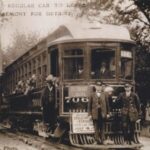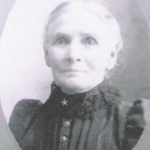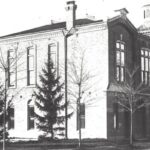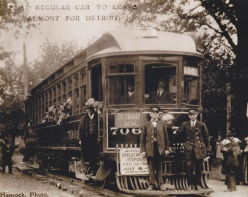
Negotiations to bring the DUR electric railway to Almont occurred in 1912 or 1913. The community committed to raise funds to cover some of the costs of construction. The cost of construction included the acquisition of the land over which the tracks were laid, laying of the tracks, and the construction of an electric power generation facility. By July 1913, the funds had been raised and construction could begin.
The construction of the electric power plant would allow the people of Almont to get electricity to their homes and businesses. It meant that Almont would be one of the first places in the area to have electricity. The electric generator was located in Merrium’s Roller Mill, which was on the southeast corner of Mill Street and South Main Street – the vacant lot next to the museum. The generator was steam powered and the exhaust steam was piped through wooden pipes to the Merrium house, which was across the street.
The path of the tracks was northward out of Romeo along Van Dyke. At the village limits, the tracks curved slightly westward so they ran behind the houses along South Main Street. In back of King’s Mill, the tracks went over a wooden trestle built over the Clinton River. They then went up Cherry Street to Mill Street where they curved back east over to Branch Street and initially ended at West St. Clair; next to the Old Town Hall.
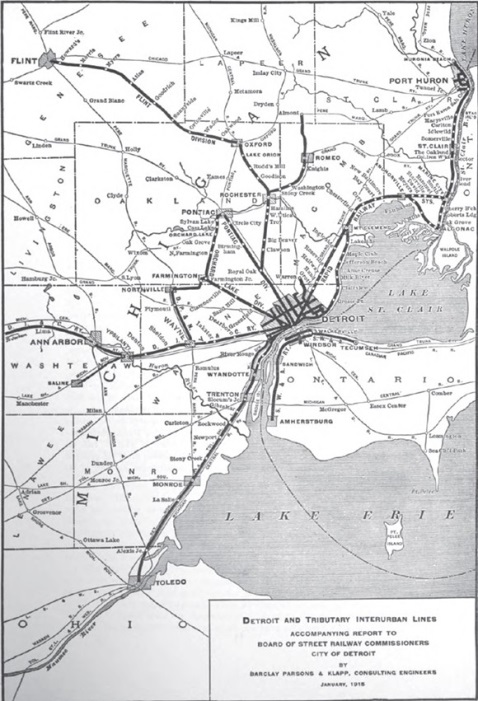
The initial DUR depot was in the front of the Old Town Hall; the Village Council rented the Council room. There was a freight shed and milk depot on the site of Burley Park. The turnaround “Y” was constructed on the location of Burley Park and the lots to the south and southwest.
The arrival of the first regular car from Detroit was scheduled for July 1, 1914. Nearly everyone in Almont had donated money or land to the project. With the arrival of the first regularly schedule car, a new era in transportation to Almont had commenced. The trip to any point south of town was now much faster and enormously less bumpy. Later that afternoon, the first regularly scheduled departure from Almont occurred. At the time, the feeling was that this would be a permanent fixture in the fabric of the community.
The electric rail line was completed just in time to facilitate the arrival of the Homecoming – Old Home Week visitors. People from out of state could take the train to Detroit and then use the DUR to make their way to Almont in a couple of hours rather than in a day or more. The DUR would only operate its line to Almont from 1914 until 1925. The tracks were removed in 1929.


